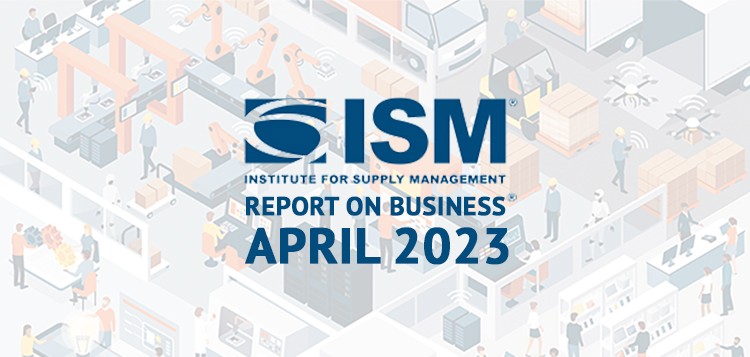Has Manufacturing PMI Hit Its Lowest Point?

Figures surrounding the manufacturing economy have been marred by doom and gloom for the better part of a year. The first quarter of 2023 showed little optimism in the year-ahead outlook for manufacturing and the economy at large. Perhaps this is why many analysts are smiling in May on the report of better-than-expected manufacturing performance in April.
The April 2023 Manufacturing ISM Report On Business was far from a beacon of hope, but it was a step in the right direction. Although manufacturing is still in contraction, some of the biggest determinants of economic health have shifted momentum to a more positive trajectory in May.
A closer look at April’s figures
The April report offered temporary relief from the consistent backslide since mid-2022. And while things are far from rosy in the manufacturing sector, April’s small glimmer of stability could be the start of a much-needed plateau.
Employment increased by 3.3% and is back into expansion territory after spending several tenuous months in contraction. New orders were up by a healthy 1.4%, representing a reversal from previous months. Trade bounced back in April, and both imports and exports rose by more than 2%. It’s also worth noting customer inventories increased and are again in expansion territory.
While the April report had several bright spots, there were areas of concern, too. Prices jumped by 4%, which is sure to create ongoing problems in the months to come. Backlogs were down, signaling order volumes are still low. Nevertheless, April’s report was a step in the right direction.
Contraction continues but at a slower pace
April’s report shows the manufacturing economy is still contracting, albeit at a slower rate than previous months. Although this isn’t generally enough to create confidence — even with an upswing in the total purchasing managers’ index (PMI) — it has sparked optimism among economists who anticipated worse news in April.
One month isn’t sufficient to declare a positive trend in manufacturing, but it could be enough to rally producers. Alongside broader economic considerations, there’s growing hope the summer months could bring much-needed stability to the manufacturing economy. If this happens, better-than-expected outcomes may occur through the second half of the year.

The beginning of a build back?
Over the last three years, manufacturers have actively worked to de-risk their supply chains in response to the pandemic. This emphasis on creating stability and reducing reliance on risky suppliers has been a welcome shift in the industry. It seems these precautions are paying off as inflation subsides and cools.
While there’s still economic stress in the market, a balance of supply and demand appears to be emerging. The hope is this positive trend will continue and serve as the beginning of a manufacturing resurgence.